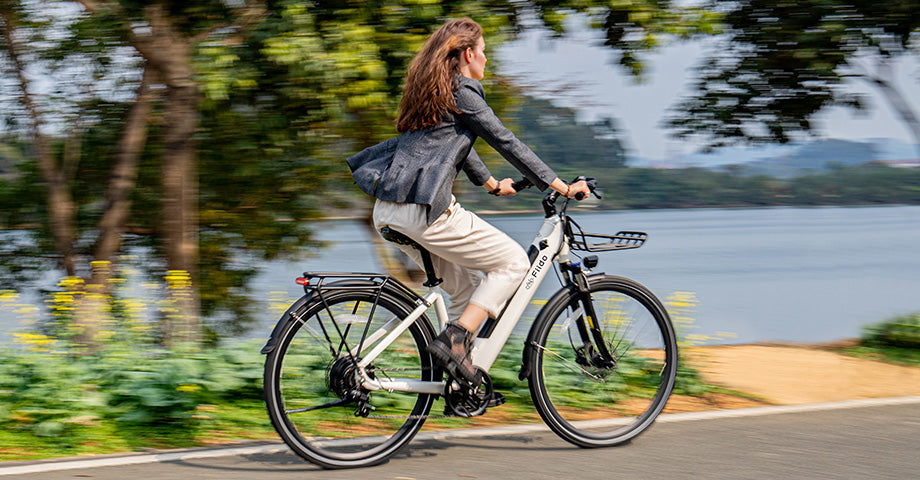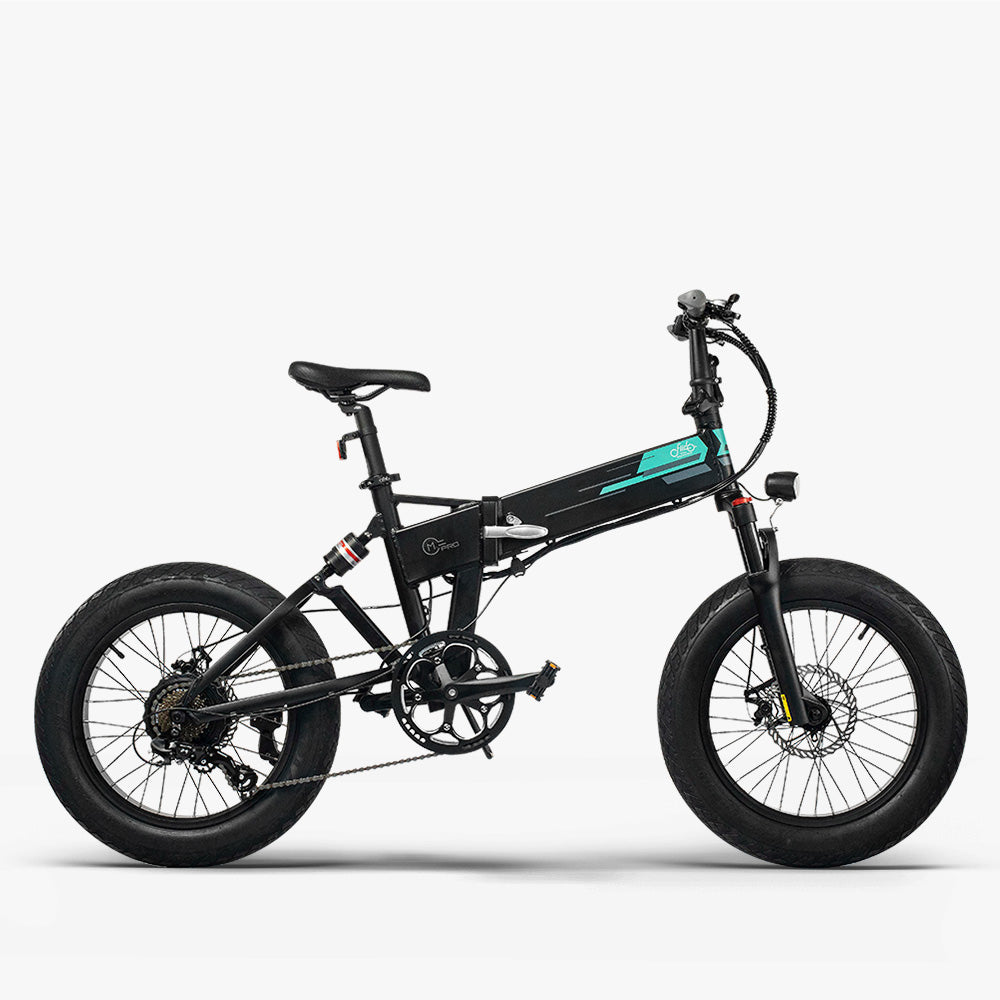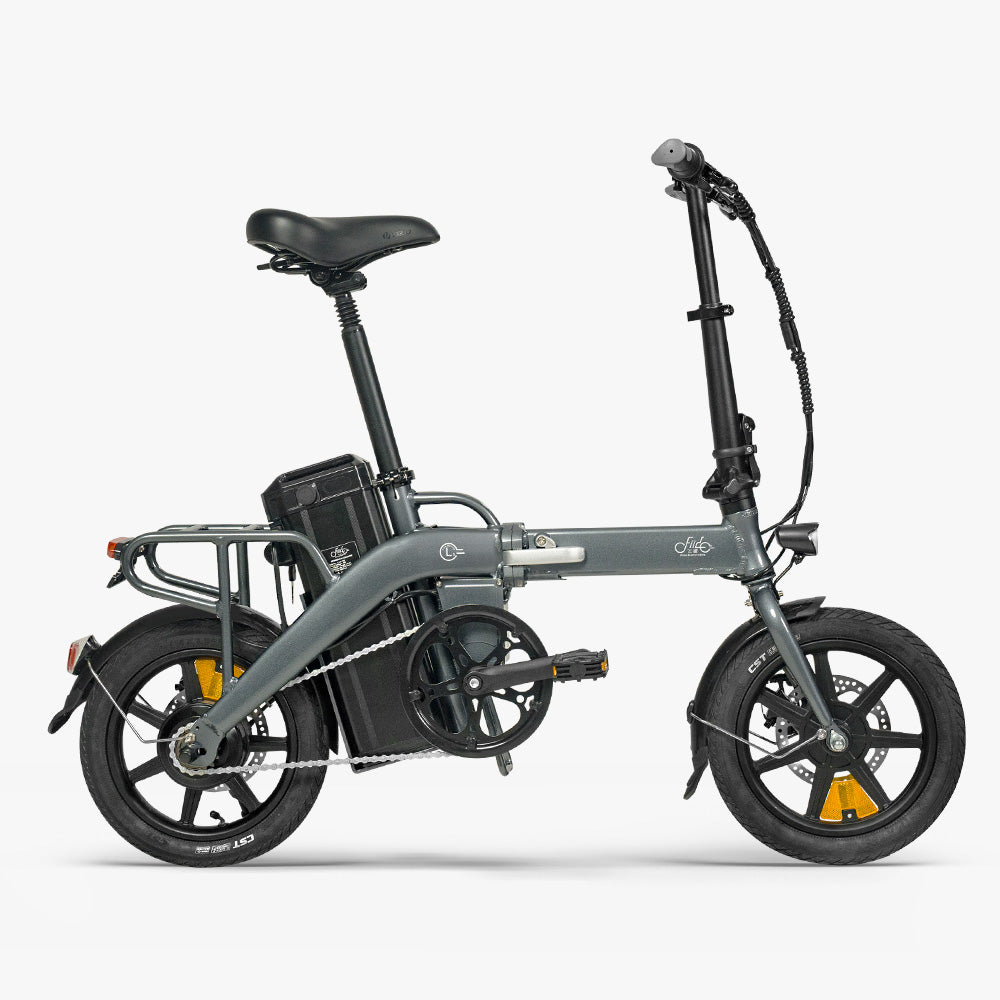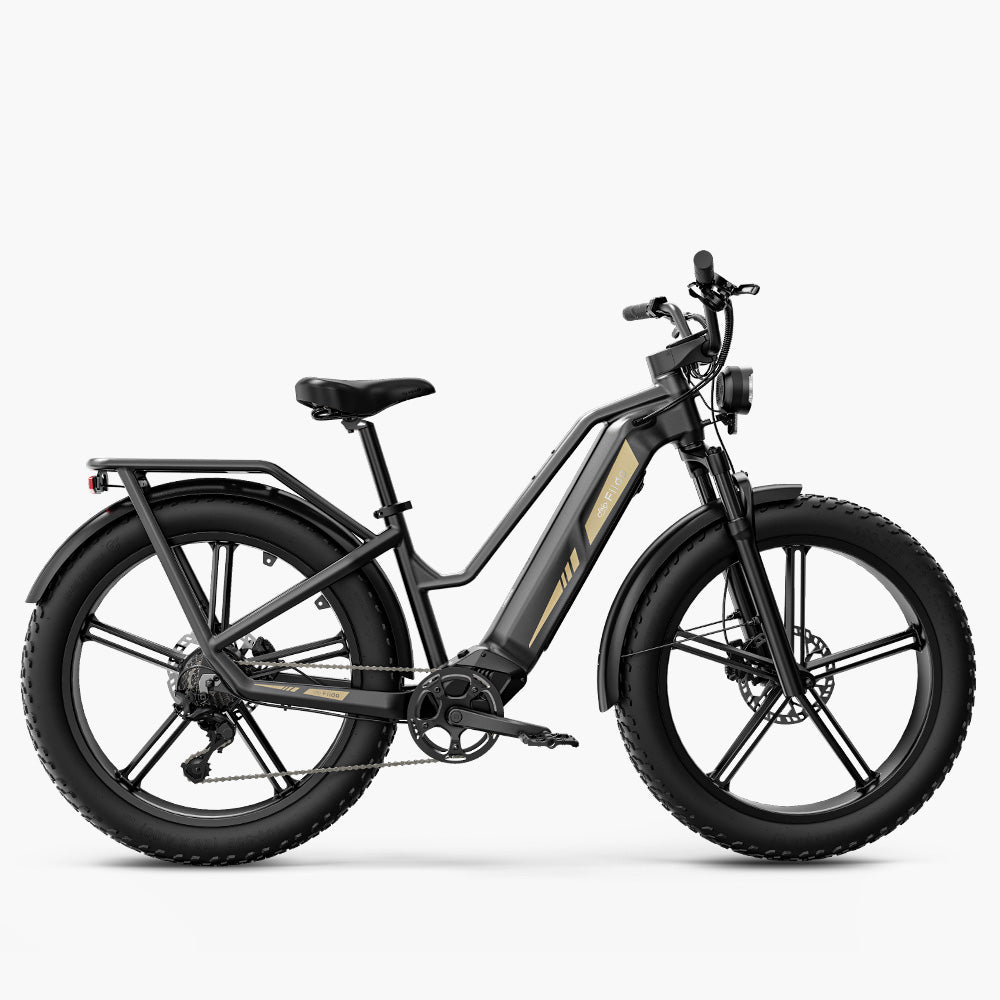Electric bikes, commonly known as e-bikes, blend traditional biking with the added push of electric power, offering an efficient way to travel without the full exertion of pedal-only bicycles. A crucial question for potential e-bike buyers or enthusiasts is: How fast can these electric bikes go? This article dives deep into the factors affecting e-bike speed, legal restrictions, comparisons with traditional bikes, and the specific benefits of choosing Fiido electric bikes.
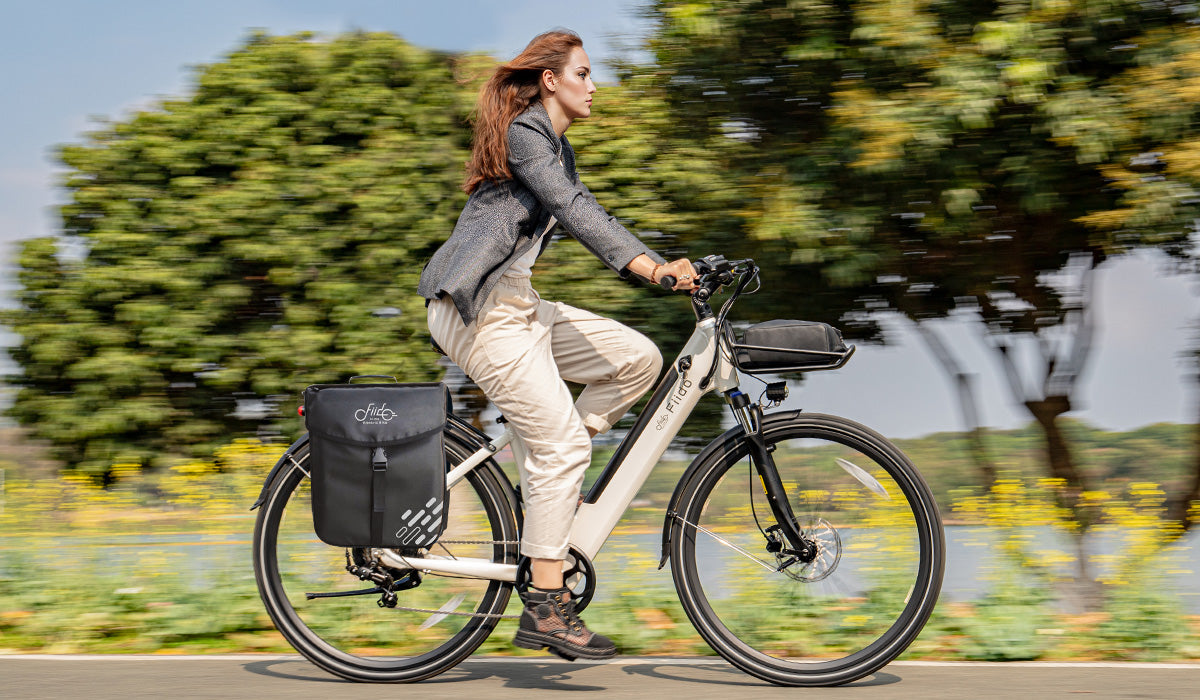
Understanding Electric Bike Speed
Key Factors Influencing Speed
-
Motor Power: The motor is the primary determinant of an e-bike's speed. Typically, e-bike motors range from 250 watts to over 750 watts. The higher the wattage, the more power the motor can deliver, which directly influences the maximum speed. However, local laws often cap the power output to ensure safety.
-
Battery Capacity: The voltage and amp-hour (Ah) rating of a battery defines how much power it can store and deliver. A higher voltage battery can often help the e-bike achieve higher speeds by providing more power to the motor. For example, a 48V battery will generally enable higher speeds than a 36V battery.The capacity of your electric bike's battery affects its performance. Larger-capacity batteries store more energy, allowing the motor to work at higher speeds for long periods.However, larger batteries don't increase an electric bike's top speed. You also need to be aware that larger batteries are heavier, which can make your electric bike less agile and slow you down over the distance of a mountain bike trail.
-
Bike Design: Aerodynamics, tire size, and bike weight also play significant roles. Aerodynamic designs reduce air resistance at higher speeds, larger tires can cover more distance per rotation, and a lighter bike requires less power to move fast.A lightweight electric bike will accelerate faster than a heavier one. They can also maintain higher speeds with less effort, making them more efficient.
The weight of an electric bike is determined by the materials and components used in its construction. Electric bike frames are usually made from either aluminum or carbon fiber. While aluminum is incredibly strong and lightweight, carbon fiber beats it in both characteristics. However, the downside of carbon fiber is that it is more expensive, increasing the cost of your electric bike.Some electric bikes are better suited to fast riding off-road than others. For example, an enduro electric mountain bike has high-end components and a design capable of taking on big Alpine descents. These electric bikes feel more surefooted on rough terrain, allowing you to ride faster. There are also off-road electric bikes that are best suited to milder terrain. These are less expensive, but you have to be realistic about their capabilities.
-
Terrain And Conditions:The terrain you ride also significantly affects how fast an off-road electric bike can go. Even the most capable electric mountain bikes are slower on rough terrain where rocks, roots, and drops are common.
You will also ride much slower in adverse weather conditions, as wet mud affects grip, causing you to ride more cautiously.You will find that your electric bike will roll faster on smooth surfaces such as paved roads or hard-packed dirt. Additionally, you will undoubtedly pick up more speed on steep downhill sections.
- Legal And Safety Regulations:It would be great if you could ride your electric bike as fast as you like off-road. However, in the United States, there are rules and regulations dictating how electric bikes can be used on and off-road. These rules and regulations also vary between states and even cities, so it is essential that you know your local laws to stay out of trouble and safe.
- Terrain And Rider Weight:When riding on flat terrain and smooth surfaces, you will notice that your electric bike will accelerate slightly faster. This is because there is less resistance than riding on rough off-road trails. Also, lighter riders will reach the limited top speed faster than heavier people as the motor doesn't have to work as hard to accelerate.
Legal Speed Limits
E-bike speed is also regulated by laws that vary by region:
Europe: E-bikes are limited to 25 km/h (15.5 mph) for pedal-assist models without a throttle.
United States: Federal law recognizes e-bikes with a maximum speed of 20 mph when powered solely by the motor, but states may have their own regulations. Some models can go up to 28 mph under pedal assist.
Real-World E-Bike Speeds: Models and Modifications
Most standard e-bikes come with speed caps as per legal standards, but real-world speeds can vary. For example:
Basic commuter e-bikes typically range between 15 to 20 mph.
More robust models designed for speed can reach the upper limits of 28 mph, especially with pedal assistance.
Modifications to Increase Speed
Modifying an e-bike to increase its speed is a popular option for enthusiasts. This can involve upgrading the motor, installing a higher-capacity battery, or tweaking the controller settings. However, modifications might void warranties and can lead to legal and safety issues.
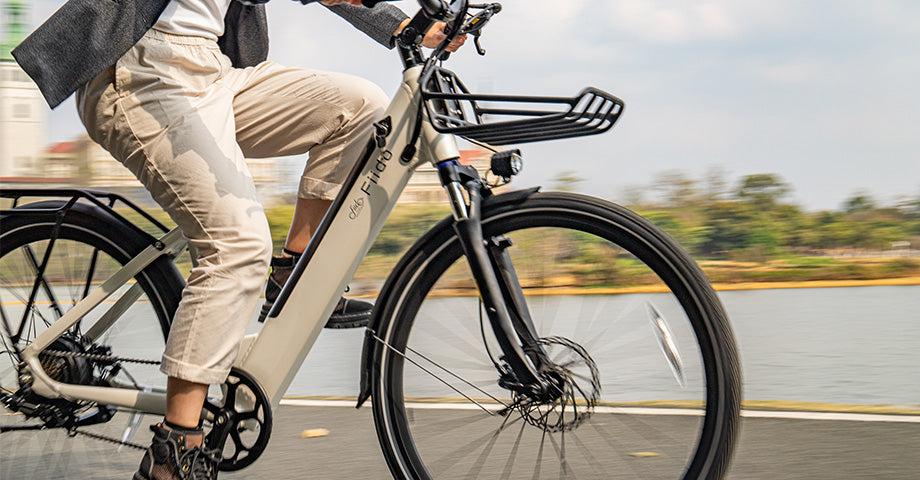
Comparing E-Bike Speeds with Traditional Bicycles
Safety Tips for High-Speed Electric Biking
Spotlight on Fiido Electric Bikes
Fiido M1 Pro
Fiido M1 Pro Fat Tire Electric Bike
The most cost-effective fat tire ebike for off-road adventures.
Fiido L3
Fiido L3 Long Range Electric Bike
Longest range folding electric bike under $1000.
Fiido Titan:
Fiido Titan Robust Cargo Electric Bike
A powerhouse with a 248-mile range and 4-piston brakes, ideal for hunting and fishing trips.
Conclusion
Electric bikes offer a fantastic blend of traditional cycling and modern technology, providing a boost to your riding efforts and allowing for faster travel with less fatigue. Whether for commuting, touring, or recreational use, understanding the speed capabilities of e-bikes can help you choose the right model for your needs. Fiido’s range of electric bikes stands out by combining speed, style, and functionality, making them an excellent choice for anyone looking to enhance their cycling experience. Embrace the future of biking with Fiido, where speed meets innovation.